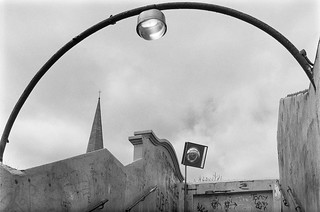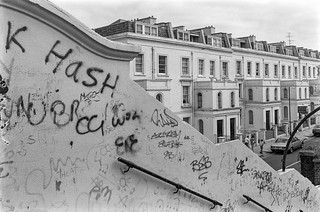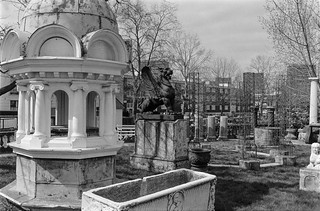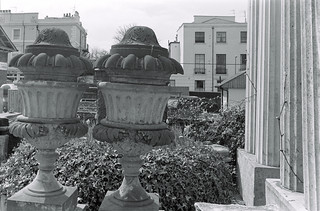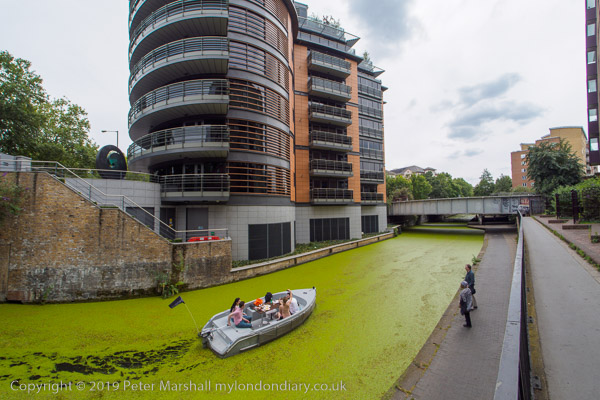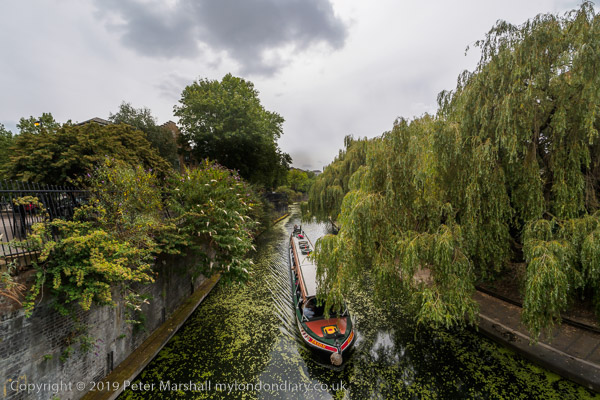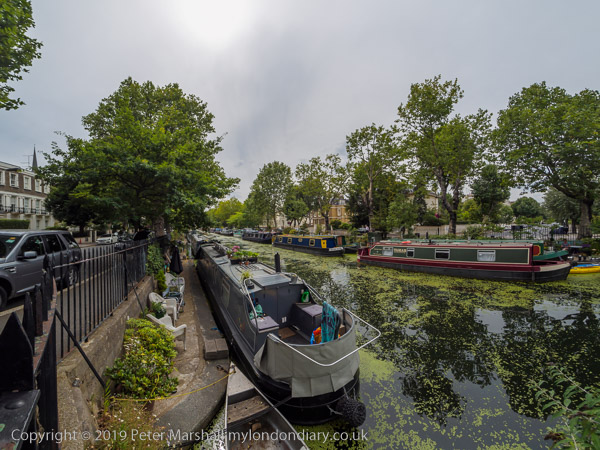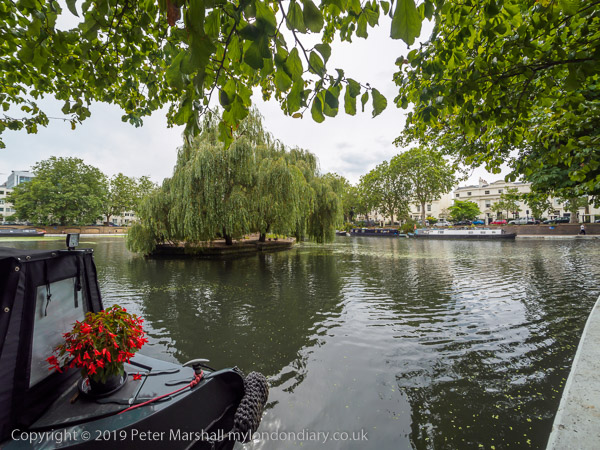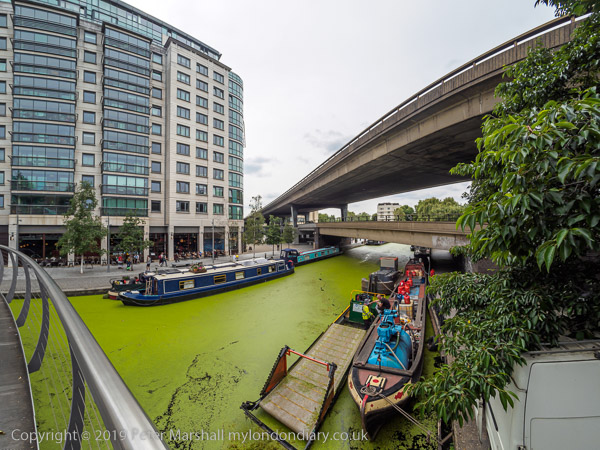You can just see the canal through the open hatch and across the galley area of the narrow-boat Crystal closest to the camera, but the view struck me as a remarkable interlocking of the boats, roads and buildings, different eras of construction and transport. The Westway here sits on top of the Harrow Road bridge over the canal, the Paddington Arm of the Grand Union which was opened in 1801. (Confusingly there is a separate Harrow Road bridge across the canal a hundred yards northwest and yet another a kilometre further on.) At right we have the concrete architecture built for the road operations of British Rail in 1968-9, around the same time as the Westway which opened in 1970. Its building made very clear the tremendous damage that building urban motorways caused to the city.
There was just something zany about this view that appealed to me, with the smooth curve of the metal lamp support and the jagged line of the concrete bridge., and the two circular objects, lamp and mirror and that dagger of a church spire with its cross.
A rather more conventional view of the canal and a canal bridge, though I did deliberately include in the foreground those rails and slope leading to nowhere. This is the bridge at the west end of Little Venice, and takes Westbourne Terrace Road across to Blomfield Rd at the right of the picture. Google Maps names this place as the Little Venice ‘Ferry Terminal’.
The north end of the footbridge in a picture above, which linked Lord Hills Road and Blomfield Rd. Here I took a simpler approach to its concrete edge, making it a jagged diagonal, emphasized by the handrails. On one side of it the graffiti, to its right the regularity of the houses, probably dating from around 1850, in Blomfield Rd. The footbridge has since been replaced by a rather less interesting metal bridge.
The Blomfields came over with William the Conqueror in 1066, their name deriving from the village of Blonville-sur-Mer in Calvados, Normandy. There were many of them by the 19th century when this road was named, and among them several bishops, well-known architects etc. I suspect it was named after Charles James Blomfield (1786 – 1857) who was Bishop of London from 1828 until he resigned due to ill health in 1856.
This area next to the Westbourne Terrace Road bridge and opposite the Canal Offices used to be home to a strange collection of stone works, but these were removed and for some years this was just an empty patch of grass. It is now a ‘wildlife refuge’, not for big game like those here, but, thanks to Edward Wilson Primary School, is The Bug Hotel, Bloomfield Garden.
Finally my young assistant takes a rest (and a photograph) by the canal underneath the Westway.
All pictures were taken in April 1987 and are from my Flickr album 1987 London Photos which now contains over 700 photographs.
All photographs on this and my other sites, unless otherwise stated, are taken by and copyright of Peter Marshall, and are available for reproduction or can be bought as prints.
There are no adverts on this site and it receives no sponsorship, and I like to keep it that way. But it does take a considerable amount of my time and thought, and if you enjoy reading it, please share on social media.
And small donations via Paypal – perhaps the cost of a beer – would be appreciated.

